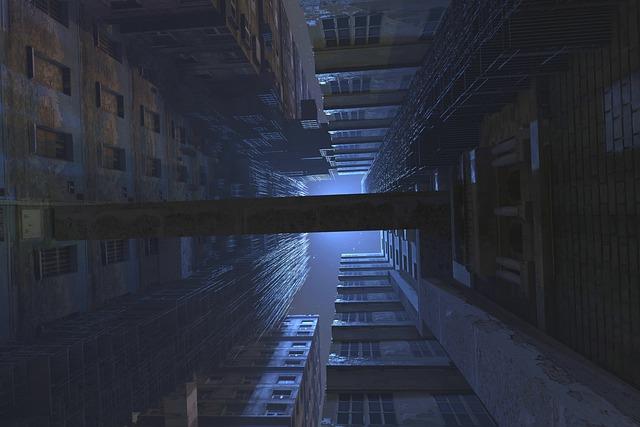In the realm of contemporary cinema, few films have managed to evoke as much intellectual curiosity and critical debate as Denis Villeneuve‘s “Blade Runner 2049.” This sequel to Ridley Scott‘s 1982 cult classic not only expands the narrative universe of its predecessor but also delves deeper into a labyrinth of philosophical and existential themes. As a visual and narrative masterpiece, “Blade Runner 2049” invites viewers to ponder the nature of humanity, the ethics of artificial intelligence, and the essence of memory and identity. This article aims to decode the complex themes embedded within the film, offering an analytical exploration of how these motifs are intricately woven into its storyline, characters, and aesthetic design. By dissecting the layers of meaning in “Blade Runner 2049,” we can gain a richer understanding of its contribution to the science fiction genre and its commentary on the human condition.
Exploring the Nature of Identity and Humanity
At the heart of Denis Villeneuve’s Blade Runner 2049 lies a profound examination of identity and humanity. The film delves into what it means to be human through the experiences of its characters, particularly the replicants who struggle with their manufactured existence. K, a replicant blade runner, embarks on a journey that challenges his understanding of self and reality. This quest raises essential questions:
- Can artificial beings possess true consciousness?
- What constitutes authentic memory and experience?
- How does society define humanity and personhood?
Villeneuve masterfully uses the dystopian landscape and intricate plot to explore these themes, creating a narrative that blurs the line between human and machine. The replicants’ search for identity mirrors our own existential inquiries, making the film a reflective piece on the essence of life and the human condition.
The Role of Memory in Shaping Reality
In the dystopian landscape of Blade Runner 2049, memory transcends its traditional role of merely preserving the past; it becomes a crucial mechanism for shaping an individual’s identity and, by extension, their perception of reality. The film delves into this theme through its characters, particularly replicants, whose implanted memories are designed to provide them with a semblance of humanity. These memories, whether real or artificial, significantly influence their actions, emotions, and decisions.
- Identity Formation: The protagonist, K, grapples with his sense of self as he uncovers layers of his past, questioning the authenticity of his memories and, consequently, his identity.
- Emotional Authenticity: Joi, a digital companion, experiences growth through shared memories, blurring the lines between artificial intelligence and genuine emotion.
- Reality Perception: Characters like Deckard and K navigate their realities, which are heavily influenced by the reliability—or lack thereof—of their memories.
Through these intricate narrative threads, the film explores how memory can be both a tool of control and a source of liberation, ultimately questioning what it means to be human in a world where reality is as malleable as the memories we hold.

Environmental Collapse and Its Ethical Implications
One of the most poignant aspects of Blade Runner 2049 is its harrowing depiction of environmental degradation and its subsequent ethical ramifications. The film’s landscape is a stark, dystopian vision of the future, characterized by barren wastelands, polluted skies, and desolate urban sprawls. This visual representation serves as a powerful commentary on the potential consequences of unchecked industrialization and environmental neglect. In such a world, the moral responsibilities of humanity are brought into sharp focus.
- Resource Scarcity: The film presents a future where natural resources are exceedingly scarce, raising ethical questions about the equitable distribution of what remains.
- Corporate Dominance: Mega-corporations, like the Wallace Corporation, exploit these scarcities for profit, further exacerbating social and economic inequalities.
- Human and Replicant Rights: In a world where survival is uncertain, the ethical treatment of both humans and replicants becomes a central issue, challenging the boundaries of moral consideration.
The stark environmental backdrop of Blade Runner 2049 forces viewers to confront the ethical implications of their actions and the broader impact on future generations. The film thus serves as a cautionary tale, urging a reconsideration of humanity’s current trajectory and a reevaluation of our ethical obligations to the planet and its inhabitants.

Technological Advancements and Their Societal Impact
The futuristic landscape depicted in “Blade Runner 2049” offers a profound commentary on the role of technological advancements in shaping societal structures and human relationships. The film delves into the ethical quandaries surrounding artificial intelligence and genetic engineering, highlighting the blurred lines between humans and replicants. This not only challenges our understanding of identity and consciousness but also raises questions about the moral responsibilities of creators towards their creations.
Several key themes emerge from the narrative, including:
- Surveillance and Privacy: The omnipresent surveillance technology in the film underscores the erosion of privacy in a highly digitized world.
- Environmental Degradation: The dystopian setting serves as a stark reminder of the potential environmental consequences of unchecked technological progress.
- Class Disparities: The stark contrast between the affluent and the impoverished in the film reflects growing societal inequalities exacerbated by technological advancements.
By exploring these themes, “Blade Runner 2049” invites viewers to critically examine the societal impact of emerging technologies and consider the ethical implications of our pursuit of innovation.































